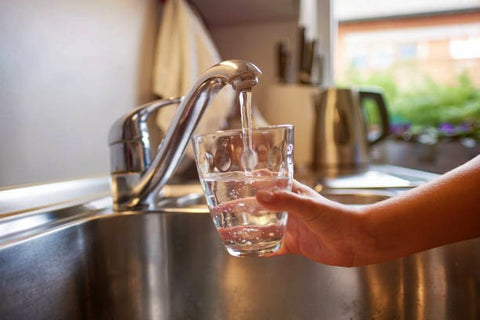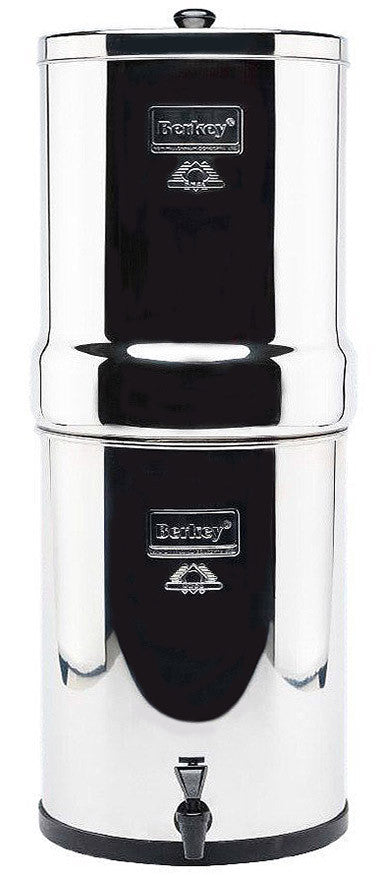
You can find the century’s old homes in some neighborhoods in your area. Interested buyers covet them because of their style, location, and charm. If you have lived in an older home for some years, you have done your fair share of remodeling your home.
Perhaps you have installed a new roof, updated the color scheme, and refinished the floors. But what about your home’s pipes? Is it 40 years old or older?
Forty years ago, galvanized pipes were a popular choice with homebuilders.
However, studies show that galvanized pipes can pose potential health risks. Older homes are more likely to have galvanized pipes in their plumbing systems.
One major health risk in the United States is lead in drinking water. Although the city’s water is generally safe, the plumbing system in most older buildings and historic homes poses potential health risks.
Thus, this article will discuss how lead can contaminate water, the risks of having galvanized pipes, and how to prevent lead from entering drinking water.
Benefits of Galvanized Pipes
When galvanized pipes were first used, homeowners preferred them since they were less costly than copper. These kinds of pipes are chosen in large construction projects, especially for outdoor plumbing.
Indeed, galvanized pipes are less expensive than copper. Furthermore, it is more durable than plastic.
Another benefit of galvanized pipes is their wider diameter, allowing more water to pass through them than copper.
Life Expectancy of Galvanized Water Pipes
Even under the best conditions, galvanized plumbing will corrode over time. Its typical lifespan is 25 to 40 years, but the pipes can fail more quickly in areas with hard water.
While the pipes appear fine on the outside, they can be rusting on the inside. The deposits on the interior can build over time. This can restrict the water flow and decrease the water pressure inside the home.
Drawbacks of Using Galvanized Pipes
Galvanized pipes are steel pipes that are coated with zinc. This was done to prevent corrosion and rust. But after years of exposure to water, galvanized pipes will rust and corrode on the inside.
Indeed, this is bad news for your plumbing, considering how often water runs through it.
Plumbers and homebuilders have used galvanized pipes for their homes even before the 1960s. As galvanized pipes age, the zinc coating erodes, which leads to pipe corrosion.
When the pipes corrode, lead, a dangerous toxin, can build up in the pipes. Take note that galvanized plumbing could pose a serious health hazard. This is true if the pipes are not replaced or updated with safer pipes.
Implementing these action levels can help water suppliers determine the lead source and reduce its concentration through corrosion control.
Indeed, residential monitoring will seek to identify lead sources in the distribution system and residential plumbing. Non-residential monitoring will help focus primarily on the lead source within your home.

Indeed, its effects on distribution systems and potential impacts on populations' health are varied and complex. Corrosion in the drinking water distribution system can occur in various materials, including polyvinyl chloride, cement, and metals.
This can increase the leaching of contaminants from these materials. Indeed, no single and reliable method exists to measure corrosion in drinking water distribution systems. While corrosion cannot be measured, the amount of lead in tap water can indicate it.
There are no direct health effects linked to corrosion in the various distribution systems when it comes to health effects.
However, corrosion can lead to contaminant leaching, which greatly concerns Americans. The major concern is lead, the main contaminant. This is used to trigger corrosion control programs.
Meanwhile, other contaminants that can be leached due to corrosion in the water distribution systems include iron and copper. Guidelines for copper and iron are based on aesthetic considerations, including their taste and color. Copper has an aesthetic objective of 1.0 mg/L and is considered non-toxic except when consumed in high doses.
However, if your water contains more than 1.0 mg/L of zinc, you should be concerned about lead and cadmium contamination. When zinc is detected in tap water at levels above 1.0 mg/L, the source is most likely galvanized piping.
The normal zinc concentrations in the groundwater can be below 0.1 mg/L. If the zinc level is high, have your water tested at a lab that can measure lead and cadmium at the levels set by the EPA.
In this test, use a stagnant water sample from your plumbing system that has been there for at least six hours. The best treatment alternative is to reduce the corrosiveness of the water source.
Health Risks of Galvanized Water Pipes
Lead consumption can lead to severe health problems with symptoms similar to the flu. You can experience high fever, chills, and muscle aches if there is significant lead in the water due to old galvanizing piping. These health problems will continue until you solve the problem.
Children are vulnerable to lead poisoning. They can suffer the following effects even when they are exposed to low levels:
- Damage to the brain and the nervous system
- Attention deficit hyperactivity disorder (ADHD), learning disabilities, and behavioral problems
- Slow mental and physical development
- Poor hearing
- Impaired motor coordination and vision
- Headaches
Adults are not as susceptible to lead poisoning as children, sickly, and elderly. However, exposure to higher concentrations or long-term exposure can pose the following health risks to adults:
- High blood pressure
- Bone problems
- Kidney problems
- Neurological problems
- Disruptive reproductive system. This can decrease fertility among men and women.
- Problems with developing fetuses during pregnancy, which leads to slow development, stillbirths, and congenital disabilities
- Disruptive digestive system
- Painful muscles and joints
- Memory loss and difficulty in concentrating
As such, it is best to switch to the consumption of bottled water until you solve your piping problems. Have a plumber inspect your system if you think that your pipes are making you ill.
If you continue drinking water from galvanized pipes, you will increase your risk of several diseases. If you live in an older house, you must test your water supply to ensure it is free of chemical elements and has a balanced pH level.
Determining if you have Galvanized Pipes at Home
If you continue to use galvanized pipes, the corroded pipes can release lead into the tap water. But now, how do you know if you have galvanized pipes?
When first installed, galvanized pipes will look similar to nickel. However, their color can change over the years depending on their environment, becoming darker, duller, or lighter.
To determine if you have galvanized pipes, begin searching at the location where the pipes enter your home. Next, find the waterline. A screwdriver and a magnet will work well to determine what your pipes are made of.
If you scratch your pipes using a screwdriver, you will find it is the same color as a penny. As such, they are made of copper. Furthermore, you will find out that the copper pipe will not stick to the magnet.
Meanwhile, if your pipes are white, capped in places, and a magnet doesn’t stick to them, they must be plastic. When you scratch the pipe's surface, it reveals a grayish-silver color, and the magnet does not stick to it, so you have galvanized steel pipes.
However, if your pipe scratches easily because of soft metal, is gray, or does not stick to a magnet, you may have lead pipes.
In that case, you must replace it as soon as possible. If you are unsure or have questions, you can ask experts to assess your home's pipes.
Test your Pipes for Lead
If you have discovered that your home has lead plumbing or galvanized pipes, one major concern is the possible release of lead into your drinking water. You might want to ask experts for help testing your water for lead.
Some states have taken steps to make their water safe, including checking for lead in the service pipes to the residence. However, homeowners are responsible for checking their homes' plumbing.
Other Plumbing Issues Due to Galvanized Pipes
Indeed, galvanized pipes can pose health hazards to you and your family. They can also cause less severe plumbing problems, which can still be frustrating. When your pipes break, the water pressure inside your home or other places can be lessened.
For example, some taps can have more pressure than others because of inconsistent erosion.
Furthermore, discolored water, often brownish-reddish in color, can sometimes flow through your taps. The erosion can lead to full-blown leaks in the pipes, and the water can damage the ceilings and walls.
Due to the line's restriction, corrosion in the galvanized pipes can lower water pressure throughout your home. Furthermore, galvanized pipes will rust and cause leaks, which will ultimately cause more damage to your home.
Make your Home Safe
The only way to ensure your home is free from lead and other health hazards is to replace lead-containing and galvanized household pipes. Experienced technicians can help you do this. Contact them now.
Identify the types of pipes in your home and repipe your plumbing system. This will help you ensure that you and your loved ones are free from water contamination.
Removing Lead from Drinking Water
A Berkey Water filter has a standard Black Berkey filter that can remove lead from the water. In addition to lead, it can eliminate all other heavy metals, up to 99.9%. Indeed, the water filtered through the Berkey Water Filter is safe for drinking.
Conclusion

Although galvanized pipes are still considered safe for drinking water, corrosive water supplies, due to their acidic condition, can still cause health concerns.
The public water supplies treat their water to make it non-corrosive, so this is not a major concern for a public water system. The concern is not that iron or zinc will leach into your pipe, but that cadmium or lead will affect the water.
The primary drinking water standards for cadmium or lead are 0.015 and 0.005 mg/L, respectively. You should have the water tested if you live in a home with a private well water system and galvanized plumbing.
This is true if the water has a slightly bitter taste. The Environmental Protection Agency (EPA) has set the standard of 5 mg/L for zinc because it can affect the taste.
Analysis and treatment of various contaminants can include factors contributing to the leaching and corrosion of contaminants from drinking water distribution systems.
The major factors include the age of the plumbing systems, the time it takes for water to stagnate, and the water quality. These factors can affect metal leeching differently. Using lead as one trigger can initiate corrosion control programs in a drinking water distribution system.
Action levels have been developed for both the non-residential and residential buildings.
← Older Post Newer Post →





